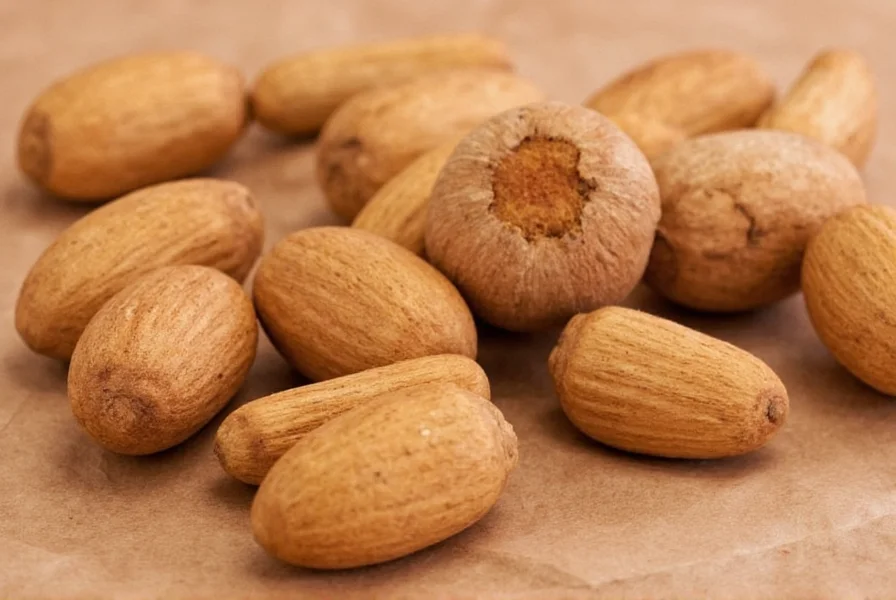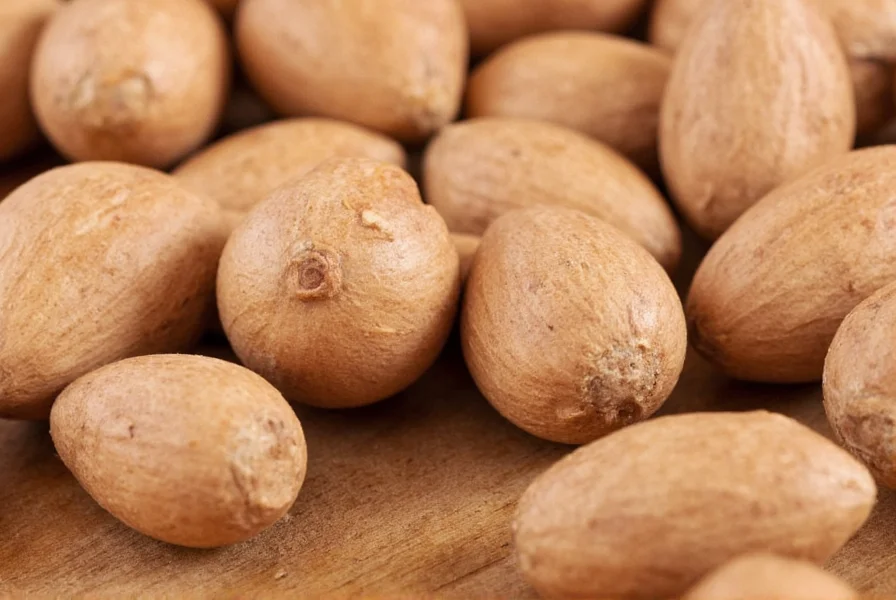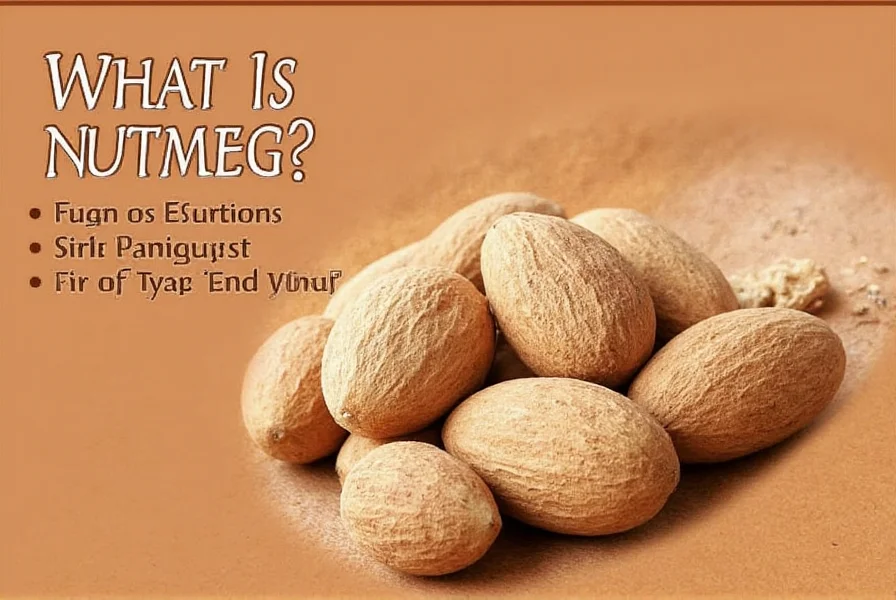Nutmeg's rich history spans over 2,000 years, with ancient traders going to extraordinary lengths to protect its source. Today, this valuable spice grows primarily in Indonesia, Grenada, and India, where careful harvesting techniques preserve its distinctive flavor profile. Understanding what nutmeg is goes beyond simply identifying it as a kitchen staple—it represents a fascinating intersection of botany, history, and culinary science.
The Botanical Background of Nutmeg
Nutmeg comes from the Myristica fragrans evergreen tree, which produces two distinct spices from a single fruit. The seed kernel yields nutmeg, while the lacy red covering (aril) surrounding the seed becomes mace. This dual-spice production makes the nutmeg tree particularly valuable in the spice trade.
When harvested, the fruit resembles a small peach. As it ripens, the fruit splits open to reveal the precious seed inside. After careful drying processes that can take up to two months, the seed becomes the hard, brown nutmeg we recognize, while the aril transforms into the deep red mace.
| Characteristic | Nutmeg | Mace |
|---|---|---|
| Source on Fruit | Seed kernel | Red aril covering |
| Flavor Profile | Warm, sweet, nutty | More delicate, citrusy |
| Color | Light to dark brown | Bright orange-red |
| Intensity | Stronger, longer-lasting | More subtle, fades faster |
Culinary Applications of Nutmeg
Professional chefs and home cooks alike value nutmeg for its ability to enhance both sweet and savory dishes. When answering what is nutmeg spice in practical terms, its versatility stands out. In European cuisine, it's essential in béchamel sauce, potato dishes, and meat preparations. In baking, nutmeg complements pumpkin, apple, and winter squash recipes beautifully.
One critical aspect of understanding nutmeg uses in cooking is recognizing that fresh grating makes a significant difference. Pre-ground nutmeg loses its volatile oils quickly, diminishing both flavor and aroma. For optimal results when using nutmeg in recipes, grate whole nutmeg directly into your dish just before serving.

Nutritional Profile and Health Considerations
Nutmeg contains several beneficial compounds, including myristicin, elemicin, and safrole, which contribute to both its flavor and potential health benefits of nutmeg. A single teaspoon (about 2 grams) provides:
- 25 calories
- 2g dietary fiber
- Significant manganese (20% of daily value)
- Moderate copper and magnesium
- Trace amounts of iron and calcium
While moderate consumption offers potential anti-inflammatory and digestive benefits, excessive intake (more than 1-2 teaspoons) can cause nutmeg toxicity due to myristicin content. Symptoms may include dizziness, nausea, and in extreme cases, hallucinations. This makes proper understanding of nutmeg safety considerations essential.
Proper Storage and Usage Techniques
To maintain nutmeg's potency, proper storage represents one of the most important nutmeg storage tips. Keep whole nutmeg in an airtight container away from light and heat. When stored correctly, whole nutmeg retains its flavor for up to three years, while pre-ground versions lose potency within six months.
When incorporating nutmeg into recipes, remember that less is often more. Its strong flavor can easily dominate a dish. For most applications, 1/8 to 1/4 teaspoon of freshly grated nutmeg per serving provides optimal flavor without overwhelming other ingredients. This principle proves particularly important when exploring how to use nutmeg in recipes featuring delicate flavors.

Historical Significance and Global Trade
The history of nutmeg reveals why this spice was once worth its weight in gold. During the 16th and 17th centuries, European powers fought vicious battles to control the Banda Islands, the sole source of nutmeg at that time. Dutch traders went so far as to destroy nutmeg trees on other islands to maintain their monopoly.
This historical context helps explain nutmeg origin and history beyond just its botanical roots. The spice's journey from exclusive Indonesian commodity to global kitchen staple represents one of the most dramatic stories in culinary history. Today, while still valuable, nutmeg's widespread availability makes understanding what nutmeg is accessible to anyone interested in culinary exploration.
Frequently Asked Questions
What is the difference between nutmeg and mace?
Nutmeg and mace come from the same fruit but are different parts. Nutmeg is the seed kernel, while mace is the red, lacy aril that surrounds the seed. Nutmeg has a stronger, warmer flavor, while mace offers a more delicate, citrusy taste. Though they share similar flavor compounds, they're not interchangeable in recipes requiring precision.
Can you eat raw nutmeg?
While technically edible, consuming raw nutmeg in large quantities (more than 1-2 teaspoons) can cause nutmeg poisoning due to myristicin content. In culinary amounts (typically 1/8 to 1/4 teaspoon per serving), nutmeg is perfectly safe when used as a spice in cooked dishes. Never consume nutmeg in medicinal quantities without professional guidance.
How can you tell if nutmeg has gone bad?
Fresh nutmeg should have a strong, warm aroma. If your nutmeg has lost its scent or tastes bland, it's likely past its prime. Whole nutmeg lasts significantly longer than pre-ground—typically 3-4 years versus 6-12 months. To test freshness, grate a small amount; if the aroma is weak or absent, it's time to replace your supply.
What are the best dishes to use nutmeg in?
Nutmeg shines in both sweet and savory applications. Classic uses include béchamel sauce, mashed potatoes, spinach dishes, pumpkin pie, apple crisp, and eggnog. It complements winter squash, root vegetables, and creamy sauces particularly well. For savory dishes, add nutmeg early in cooking; for delicate desserts and beverages, add it near the end for maximum aroma.











 浙公网安备
33010002000092号
浙公网安备
33010002000092号 浙B2-20120091-4
浙B2-20120091-4